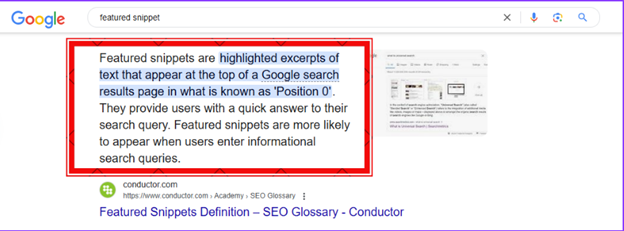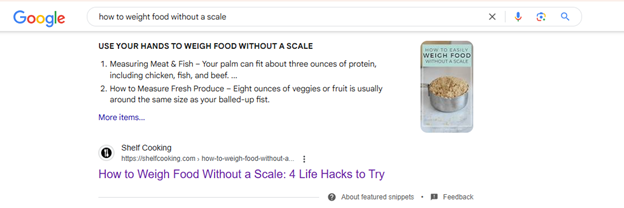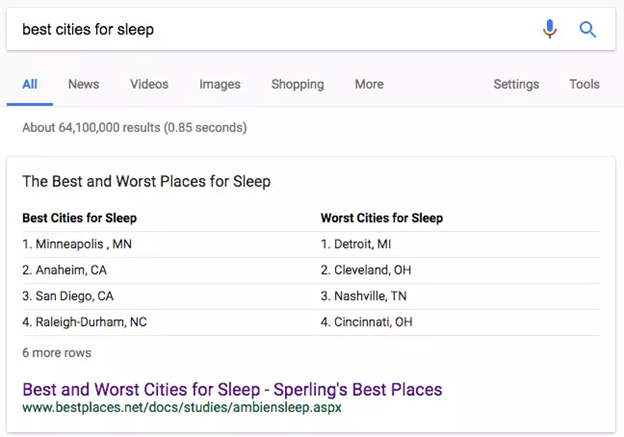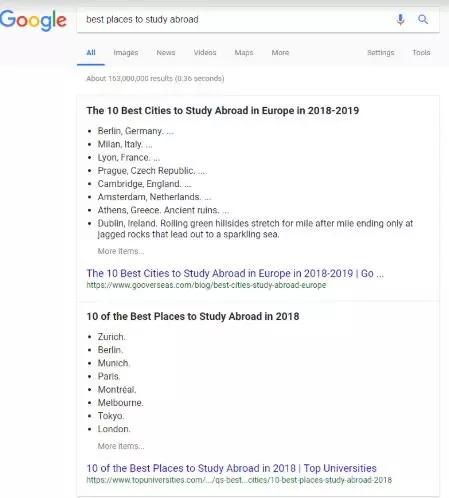When it comes to Google, the top of the top is considered the most successful. You might think that number one is the trophy position, but what about position zero? It’s where the most relevant content shows up! Featured snippets and AI Overviews are content pieces that are displayed even before the actual SERPs. Ranking for these is subject to certain strategies and optimization techniques, but it’s here that your content is actually seen.
With the newer integration of AI models, the new search engine results page looks a bit different from before. Where we saw Featured Snippets before, an AI overview window shows up, providing a complete snapshot of the query. Let’s dive deeper to unlock the main difference between featured snippets and AI overviews.
What are Features Snippets?
Featured snippets are information box that appear on top of the Google’s search, highlighting the most relevant information from a webpage. It was designed to answer search queries upfront, so users don’t have to scroll through numerous pages before finding an answer.

Th display or format of featured snippet can be different — with some looking like definitions and paragraphs, and others listed as listicles or tables. Either way, the objective is the same — to provide a precise and quick answer to the searcher.
Here are a few different types of featured snippets.
- Paragraph Snippets — a brief paragraph explaining the query in a few sentences.
- List Snippets — Numbered lists or bullet points providing steps, features, or examples.

- Table Snippets — Data, numbers, and other statistical information displayed in the form of a table.
- Double snippets — Overlapping snippets from two separate sources, presenting information from the best and brightest pages.
- Video Snippets — A video preview that effectively answers the query in a short and helpful recording.
In a nutshell, landing content on a featured snippet is a major accomplishment for any website, as it places their URL on top of the first ten pages on Google SERP.
What are AI Overviews?
AI overviews are a relatively recent integration, as they didn’t exist until May 2024. Google recognizes certain terms and uses generative AI to answer queries where they are considered most helpful. This information appears at the top of the SERPs, which is why they are comparable to Featured Snippets.
AIOs use information from different web sources, as well as Google’s Knowledge Graph. It then displays it in the most easy-to-navigate format to offer convenient readability. However, the information does not come from a specific webpage, so it does not directly help publishers and SEOs.
According to research by SE Ranking, about 8.71% of keywords from their database containing 100,013 keywords show AI Overviews (AIOs). In some cases, expanding the overview tab also brings up a few helpful links, which users can click to get more information.
Key Differences Between Featured Snippets and AIOs
While featured snippets and AI overviews serve the same purpose, their display and source may be different. Let’s discover their basic differences in the table below.
| Features | Featured Snippets | AI Overviews |
| Source | Information from one or two sources (max). | Aggregated response combining knowledge from multiple sources. |
| Format | Short and to the point. | Detailed answer covering the topic comprehensively. |
| Click Potential | Great click potential for the featured website. | Reduces chances of clicks because users get their information at a glance. |
| Interactivity | Static and non-interactive. | Interactive questions and feedback features. |
| Availability | Shows up for specific searches. | Roll out in progress, leading to AIOs appearing for more keywords |
How To Optimize Content Strategy to Show Up at the Top?
Now that we know the difference between featured snippets and AI overviews, it is time to discover how to strategize for each. Follow these simple tricks to boost your chances of landing the zero position.
For Featured Snippets:
Unlike standard positions that display listings with meta tags and description, featured snippets appear as a direct answer to the search query. Google Bots extract the most relevant paragraph, list, or table from a page, and display it as a featured snippet.
Here are a few techniques that can boost your chances to get listed on Featured Snippets.
- Straightforward and concise answer to one of the popular questions on SERP.
- Satisfy user intent effectively.
- Use FAQ schema or other relevant content markups.
For AI Overviews:
AI overviews are a great way to gain traffic. By getting featured within the AI snapshot, your site’s potential to attract audience becomes tenfold.
But can you actually optimize for AI overviews? Yes, however, there is no tried and tested method here. Although, several SEOs noticed that following these practices for keywords that rank in AI Overviews are quite effective.
- Make sure your targeted search is appearing for AI Overviews.
- Meet search intent with a precise and short answer.
- Use easy-to-filter content format (headers, tables, and bullet points).
- And lastly, continue to work on your SEO strategy to boost credible, authoritative, and comprehensive content!
Are Featured Snippets Dead?
After the introduction of AIOs in 2024, things have turned around drastically for the zero position. There is an entire discourse on Reddit questioning if featured snippets carry any weight in the current SERP.
This misconception was addressed in a June 2024 survey that uncovered the following:
“Featured snippets appear alongside AIOs 45.39% of the time.”
The survey also states that the “Show More” feature in AIOs uncover an average of 4 links among the 84.72% of AIOs where links actually appear. This means that websites have a great chance of getting featured, even for keywords that predominantly return an AIO section.
So, is it right to say that Featured Snippets are dead? Not really. They still appear for 12.29% of search queries, most of which exist alongside AIOs.
To sum up, understanding and addressing the difference between Featured Snippets and AI overviews is the key to unlocking the zero position. Following standard SEO practices alongside the suggested content optimization techniques is what will ultimately get you there on top of the top!








